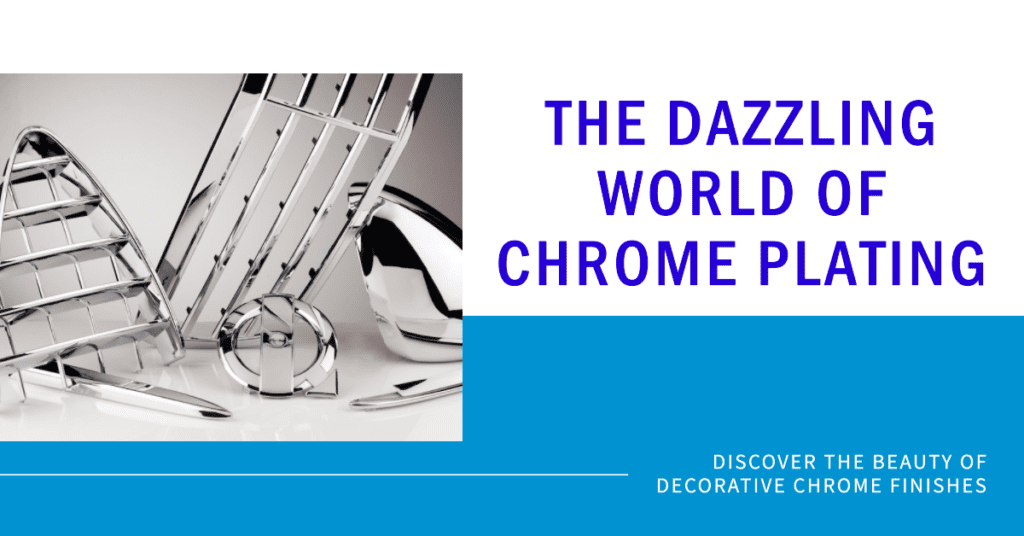
The shimmering finish of chrome-plated items has long captured the imagination of people, reflecting not just light but also the spirit of modern innovation. Chrome plating, particularly decorative chrome plating, is a process that elegantly combines science, art, and craftsmanship. This metallurgical marvel, which traces its roots back decades, has become an integral part of industries ranging from automotive to fashion. Far beyond its glistening exterior, the method of decorative chrome plating has profound technological intricacies, each step meticulously designed to ensure a perfect blend of beauty and durability.
As we dive deeper into this subject, we will explore the magic behind this finishing process, its history, and its undeniable significance in today’s world.
The Lustrous Legacy of Decorative Chrome Plating
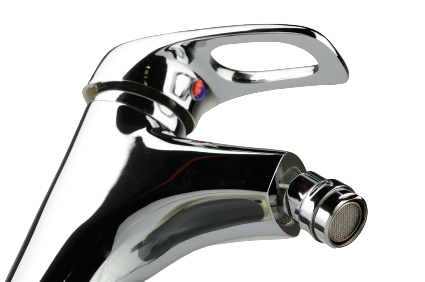
Decorative chrome plating
Chrome plating, often seen as a symbol of modernity, has a surprisingly rich history. Its captivating gleam has been sought after for both protective and decorative purposes, evolving considerably over the years. Here, we delve into the roots of this metallurgical phenomenon and its journey through time.
The inception of chrome plating dates back to the early 20th century. Initially developed as a corrosion-resistant solution, its aesthetic potential was quickly realized.
As technology progressed, the techniques, applications, and types of chrome plating diversified. From being a mere protective layer, it evolved to cater to the luxurious demands of the automobile industry, fashion segments, and home decoration.
Table: Key Milestones in Chrome Plating
| Decade | Key Milestones |
|---|---|
| 1920s | Introduction in the automobile industry for aesthetic purposes. |
| 1940s | Rapid commercialization and widespread industrial application. |
| 1960s | Environmental concerns bring about changes in the plating process. |
| 1990s and Beyond | Focus on sustainable and eco-friendly processes. |
Chrome Plating: From Function to Fashion
While chrome plating’s initial goal was primarily to protect metals from corrosion, its shimmering finish soon caught the attention of designers and artisans. The allure of a mirrored, silvery finish transformed it from an industrial solution to a fashion statement.
The world of decorative chrome plating offers more than just the classic silver finish. Over time, different variants have emerged to cater to different aesthetic demands. These include black chrome, which offers a darker tint for a more muted elegance, and blue chrome plating that provides a unique bluish hue.
Applications through Time
The versatility of decorative chrome plating has seen it being adopted across various industries and for myriad applications.
Table: Evolving Applications of Decorative Chrome Plating
| Decade | Primary Application | Notable Uses |
|---|---|---|
| 1920s | Automobiles | Car bumpers, grills, and logos |
| 1940s | Industrial Equipment | Machine parts, tools |
| 1960s | Fashion & Jewelry | Accessories, watches, jewelry |
| 1980s | Home Décor | Faucets, fixtures, furniture accents |
| 2000s and Beyond | Tech Gadgets | Smartphone exteriors, computer components |
While chrome plating has been an industry favorite, it hasn’t been without its challenges. From environmental concerns related to the use of hexavalent chromium to the quest for achieving consistent, flawless finishes, the industry has faced several hurdles.
The key challenges include adherence to environmental standards, achieving a uniform finish, and navigating the increasing raw material costs.
What Are the Different Types of Chrome Plating?
Chrome plating has long been celebrated for its captivating finish and protective attributes. However, not all chrome plating is the same. Over the years, as technology and techniques have evolved, different types of chrome plating have been developed to cater to varying needs and applications. Each type has distinct properties, advantages, and potential use cases. Let’s delve deeper into the diverse world of chrome plating.
1. Decorative Chrome Plating
Often the most recognized form of chrome plating, decorative chrome plating is primarily used to provide a lustrous, mirror-like finish to objects. This form of plating is relatively thin, usually ranging from 0.2 to 0.5 microns thick, making it best suited for aesthetic applications.
It offers a moderate level of corrosion resistance and is commonly applied over a layer of nickel to enhance adhesion and achieve a smoother finish. It is commonly used for automobile parts, jewelry, bathroom fixtures, and household decoration.
2. Hard Chrome Plating
Also known as industrial chrome or engineered chrome, hard chrome plating is utilized primarily for its durability and wear resistance. With a thickness usually between 25 to 500 microns, it’s substantially thicker than its decorative counterpart.
The key characteristics of hard chrome plating involve high durability and wear resistance, a low coefficient of friction, and the ability to be applied to a variety of base materials, including steel, brass, and copper. Common applications include machine components, aerospace parts, hydraulic cylinder rods, and molds.
3. Bright Chrome Plating
This is a variant of decorative chrome where a bright, polished finish is the primary objective. It’s often used when an item needs a reflective surface. It is highly polished and radiant finish. This finish is often used for applications where aesthetics are paramount, such as mirror fixtures, decorative art pieces, and some automotive components.
4. Satin Chrome Plating
Offering a matte or brushed finish, satin chrome plating is an alternative to the shiny finishes of decorative and bright chrome. This finish offers non-reflective and muted finish, providing a sophisticated and modern appearance.
The common applications are modern interior fixtures, camera equipment, and automotive interior components.
5. Black Chrome Plating
As the name suggests, this type of plating imparts a dark, often shiny finish to the treated parts, making them stand out. It provides dark and reflective finish that combines aesthetics with certain functional benefits like reduced glare. The common applications are ****solar panels, automotive trim, and optical components.
6. Electroless Nickel-Chrome Plating
Unlike other chrome plating methods, this process does not rely on an electric current. Instead, it utilizes a chemical bath to deposit chrome on the object’s surface. The unique characteristic of this plating is that it offers uniform layering, even on complex geometries.
The common applications are in oil field valves, food processing equipment, and electronic components.
Table: Overview of Chrome Plating Types
| Type | Finish | Thickness (microns) | Primary Use |
|---|---|---|---|
| Decorative Chrome | Mirror-like | 0.2 – 0.5 | Aesthetics |
| Hard Chrome | Matte/Dull | 25 – 500 | Industrial, wear resistance |
| Bright Chrome | Highly reflective | Varies | Decorative, high reflection |
| Satin Chrome | Matte | Varies | Modern aesthetics |
| Black Chrome | Dark, reflective | Varies | Aesthetics, reduced glare |
| Electroless Nickel-Chrome | Smooth, even | Varies | Uniform coverage, corrosion resistance |
Related Resource: Nickel vs Chrome
The Intricate Process of Decorative Chrome Plating
Decorative chrome plating is a process much celebrated for the gleaming finish it provides. Beyond the captivating sheen, there lies a meticulous process that requires precision, knowledge, and expertise. Decorative chrome plating is not just about achieving an aesthetically pleasing result; it also adds a thin protective layer to the material, boosting its resistance to corrosion and wear. Here’s an in-depth look at the intricate process of decorative chrome plating.
Step 1: Cleaning and Preparation
The initial step is pivotal, setting the tone for the entire process. To ensure optimal plating results, the surface of the object must be free from all contaminants, oils, oxides, and any existing coatings.
- Ultrasonic Cleaning: The object is submerged in a cleaning solution and subjected to ultrasonic waves, which helps dislodge contaminants at a microscopic level.
- Acid Cleaning: A dip in acid, often hydrochloric or sulfuric, removes oxides and scales.
- Rinsing: After each cleaning step, the object is thoroughly rinsed to prevent any cross-contamination.
Step 2: Pretreatment and Base Coating
To achieve the best adherence and a flawless finish, most objects are first plated with a base layer, often of nickel or copper. This base coat serves multiple purposes, including leveling the surface, providing additional corrosion resistance, and enhancing the final appearance.
The object is submerged in a bath containing the chosen base metal’s salt solution and connected to a cathode, while a counterpart electrode is connected to the anode. When electricity is applied, the metal ions in the solution are reduced and deposited onto the object’s surface.
Step 3: Activation
Even after cleaning and base coating, the object’s surface can become passive, making it less receptive to subsequent plating. An activation step, usually involving a short dip in an acidic solution, ensures the surface is chemically prepared for the chrome plating.
Step 4: Chrome Plating
The heart of the process, this is where the magic happens. The object is submerged in a chromic acid solution, where it becomes the cathode in an electrochemical process. The direct current is passed through the bath, causing chromium ions to be reduced and deposited onto the object, creating a thin, bright, and adherent layer.
Step 5: Rinsing and Drying
After chrome plating, it’s imperative to remove any residual chemicals that might have clung to the object. The chromed object is rinsed multiple times to ensure complete removal of any adhering chromic acid. Hot air or infrared drying techniques are employed to ensure the object is free from moisture, which could mar the finish or lead to subsequent corrosion.
Step 6: Quality Control and Inspection
To ensure that decorative chrome plating meets desired standards, rigorous quality control is necessary. Visual inspection checks for uniformity, brightness, and the absence of defects such as blisters or pits. Thickness testing, using specialized instruments, measures the thickness of the chrome layer, which typically ranges from 0.2 to 0.5 microns for decorative chrome plating.
Table: Decorative Chrome Plating Process Overview
| Step | Description | Typical Parameters |
|---|---|---|
| Cleaning & Preparation | Removing contaminants; Preparing surface | Ultrasonic and acid cleaning |
| Pretreatment & Base Coating | Applying a base layer (often nickel/copper) | Electrolytic bath; Base metal deposition |
| Activation | Ensuring surface receptivity | Short acid dip |
| Chrome Plating | Applying the chrome layer | Chromic acid bath; Electroplating |
| Rinsing & Drying | Removing residual chemicals; Drying | Multiple water rinses; Hot air/infrared drying |
| Quality Control & Inspection | Checking the final product for standards | Visual inspection; Thickness testing |
Decorative Chrome Vs. Hard Chrome: A Comparative Study
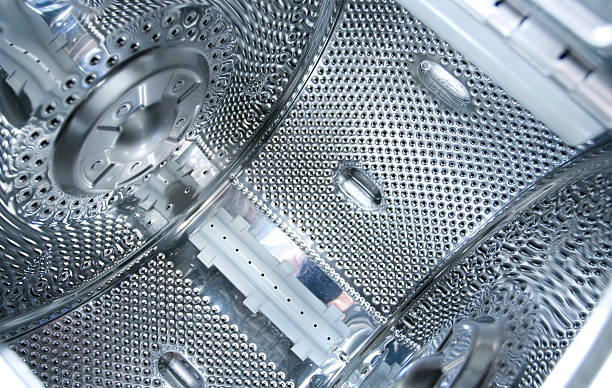
chrome-plated drum of the washing machine
Hard chrome plating
Chrome plating, a form of electroplating, is used to create a very thin layer of chromium on a metal object. While the process for both decorative and hard chrome plating is similar, their applications, characteristics, and purposes differ significantly. Let’s delve deep into their comparative analysis:
1. Purpose & Appearance
As the name suggests, decorative chrome plating is primarily aesthetic. It creates a shiny, mirror-like finish that enhances the visual appeal of an object. Underneath the chrome layer, there is typically a layer of nickel or copper, which helps achieve that shiny finish.
Hard Chrome **** plating is intended for industrial applications where the primary objective is to improve durability and reduce wear. Unlike decorative chrome, its appearance is duller and less reflective.
2. Plating Thickness
In decorative chrome plating, the chromium layer is very thin, typically between 0.2 and 0.5 microns. Its primary purpose is to provide shine and protection against corrosion. On the other hand, the hard chrome plating layer is significantly thicker, ranging from 10 to 500 microns, making it suitable for heavy-duty applications where wear resistance is essential.
3. Wear & Corrosion Resistance:
Decorative Chrome ****offers some degree of corrosion resistance, its primary purpose is aesthetic. The underlying nickel or copper layer usually provides additional corrosion resistance.
The significant thickness of hard chrome makes it exceptionally wear-resistant, suitable for industrial machinery components that experience heavy use. It’s also corrosion-resistant, making it apt for tools and parts exposed to harsh environments.
4. Applications
Decorative chrome is commonly used in automotive trims, bathroom fittings, bicycle parts, and other consumer goods that need a shiny finish. While hard chrome is predominantly used in industrial settings. It’s applied to components like hydraulic cylinder rods, tools, and industrial machinery parts.
5. Cost & Process Time:
Decorative Chrome plating ****is typically quicker and less expensive because the layer applied is much thinner and doesn’t require the same level of precision regarding thickness. Hard chrome is usually more time-consuming and expensive due to the thicker layer and the need for precise controls to achieve the desired properties.
Table: Decorative Chrome Vs. Hard Chrome
| Feature | Decorative Chrome | Hard Chrome |
|---|---|---|
| Purpose & Appearance | Aesthetic, shiny | Functional, duller |
| Thickness | 0.2 – 0.5 microns | 10 – 500 microns |
| Wear Resistance | Moderate | High |
| Applications | Automotive trims, fittings | Hydraulic rods, machinery components |
| Cost & Process Time | Typically quicker & less expensive | More time-consuming & costly |
Applications of Decorative Chrome in Modern Industries

Steel custom part with decorative chrome plating
In contemporary industries, aesthetics often go hand-in-hand with functionality. Decorative chrome plating has found its niche in a multitude of sectors, providing both visual appeal and a protective finish. Let’s explore its various applications though a detailed table.
Table: Expanded Applications of Decorative Chrome Plating Across Various Industries
| Industry/Segment | Specific Application | Description |
|---|---|---|
| Automotive | 1. Rims & Wheels | Many luxury and custom vehicles sport chrome-plated rims, enhancing their visual allure. |
| 2. Grills | Chrome-plated grills add a sophisticated touch to vehicle exteriors. | |
| 3. Door Handles | Door handles often receive a chrome finish for enhanced durability and a polished look. | |
| 4. Bumpers | Some vehicles have chrome-plated bumpers for both aesthetics and additional protection. | |
| 5. Mirror Covers | The side mirrors of many cars are adorned with a chrome finish, elevating the vehicle’s overall aesthetics. | |
| Consumer Electronics | 1. Gadget Trims | Decorative chrome provides a sleek finish to edges and logos of devices like smartphones and laptops, emphasizing a premium feel. |
| 2. Audio Equipment | Headphones, microphones, and other audio devices incorporate decorative chrome elements for a polished appearance. | |
| 3. Television Stands | Some TV stands are chrome-plated, adding a touch of elegance to modern living rooms. | |
| 4. Game Consoles | Certain elements of gaming consoles might have chrome plating for a futuristic appeal. | |
| 5. Remote Control Accents | Edges and buttons of some remote controls are chrome-plated for a premium feel. | |
| Home & Furniture | 1. Bathroom Fittings | Faucets, showerheads, and other bathroom fixtures are chrome-treated for enhanced visual appeal and functionality. |
| 2. Furniture Accents | Chrome-plated elements, such as table legs, chair legs, and cabinet handles, accentuate the design of contemporary furniture. | |
| 3. Lighting Fixtures | Lamps and chandeliers often have chrome-plated parts, adding a modern touch to interiors. | |
| 4. Kitchen Appliances | Handles and trims of appliances like refrigerators or ovens might have a chrome finish. | |
| 5. Door Knobs and Locks | Chrome plating is common on door hardware, combining durability with a polished look. | |
| Fashion & Accessories | 1. Jewelry | Items like cufflinks, bracelets, and rings feature chrome plating, offering a luxurious look without the hefty price of similar metals. |
| 2. Watches | Some watch casings and straps are chrome-plated, giving them an elegant finish. | |
| 3. Belt Buckles | Many belt buckles are chrome-plated, adding durability and a shiny finish. | |
| 4. Sunglasses Frames | Certain high-end sunglasses have chrome-plated frames for a unique appearance. | |
| 5. Handbag Accents | Parts like clasps or chains of handbags can be chrome-plated for a luxurious touch. | |
| Bicycles & Motorcycles | 1. Frames & Parts | Frames of bicycles and motorcycle parts like handlebars benefit from chrome plating for aesthetics and corrosion resistance. |
| 2. Exhaust Pipes | Chrome plating is common on motorcycle exhausts, preventing rust and adding visual appeal. | |
| 3. Fenders | Fenders with chrome finish resist corrosion and enhance the motorcycle’s overall aesthetics. | |
| 4. Pedals | Chrome-plated pedals offer improved grip and a polished look. | |
| 5. Saddle Rails | The rails of bicycle saddles might be chrome-plated for added durability. | |
| Musical Instruments | 1. Wind Instruments | Instruments such as trumpets and trombones feature chrome-plated elements, resulting in a gleaming finish. |
| 2. Drum Hardware | Drum kit elements like rims, stands, and other parts often have decorative chrome adornments. | |
| 3. Guitar Hardware | Elements like tuning pegs and bridge pins on guitars might be chrome-plated for both aesthetics and longevity. | |
| 4. Piano Pedals | Some piano pedals are chrome-plated for a polished appearance and smooth function. | |
| 5. Saxophone Keys | Many saxophones have chrome-plated keys, ensuring durability while maintaining the instrument’s aesthetic appeal. |
Prolean’s Chrome Plating Services: Where Expertise Meets Excellence
In the intricate world of chrome plating, Prolean stands as a testament to precision, quality, and an unparalleled commitment to excellence. Bridging the gap between age-old craftsmanship and modern technological advancements, Our Chrome Plating Services have carved a niche for themselves, setting industry standards and transforming the way chrome plating is perceived and implemented.
Table: Prolean’s Chrome Plating Services
| Services | Summary |
|---|---|
| Craftsmanship | Refining and perfecting traditional techniques |
| Technology | State-of-the-art equipment and software for precise and consistent results |
| Diverse Offerings | Services for a wide range of industries and applications |
| Quality Assurance and Sustainability | Rigorous quality checks and environmentally friendly processes |
| Tailored Solutions | The collaborative approach to meet unique client requirements |
| Dedicated Team | Experienced professionals for flawless execution of projects |
Conclusion
The journey through the lustrous universe of decorative chrome plating is a testament to the power of human innovation and artistry. From its historical significance to its contemporary applications, decorative chrome plating stands as an embodiment of both form and function, marrying aesthetics with durability.
Every gleaming rim, every shimmering piece of jewelry, and every chrome-accented gadget we encounter in our daily lives carries with it a legacy – a legacy of meticulous craftsmanship, technological evolution, and an industry’s commitment to excellence. It reflects our innate human desire to beautify our surroundings, elevate the ordinary to the extraordinary, and add a touch of luxury to our everyday objects.
FAQ’s
What is decorative chrome plating?
Decorative chrome plating is a process where a thin layer of chromium is electroplated onto a metal or plastic object. Unlike hard chrome plating, decorative chrome is thinner and primarily used for aesthetic purposes, giving objects a shiny, mirror-like finish while also providing some level of corrosion resistance.
How does decorative chrome differ from hard chrome plating?
While both involve the application of chromium to a substrate, decorative chrome is primarily for aesthetics and is much thinner than hard chrome. Hard chrome plating, on the other hand, is thicker and is used for its wear resistance, reduced friction, and durability, especially in industrial applications.
Is decorative chrome plating limited to automotive applications?
No. While the automotive industry is a significant user of decorative chrome for parts like rims and grills, it is widely used in various industries. This includes consumer electronics, home furnishings, fashion accessories, bicycles, musical instruments, and more.
How long does decorative chrome plating last?
The longevity of decorative chrome plating depends on factors such as the quality of the plating process, the environment in which the plated object is used, and how it’s cared for. With proper care and under normal conditions, decorative chrome can retain its luster for several years.
Can any metal be used as a base for decorative chrome plating?
Most metals can be chrome plated, but the process might vary slightly depending on the base metal. Commonly plated metals include steel, brass, copper, and aluminum. It’s essential to prepare the surface appropriately to ensure good adhesion and a high-quality finish.

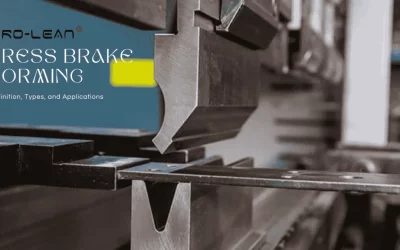
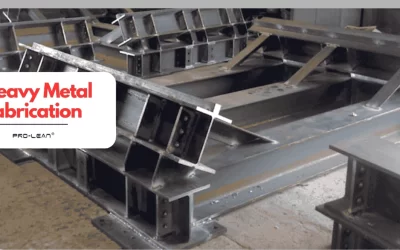
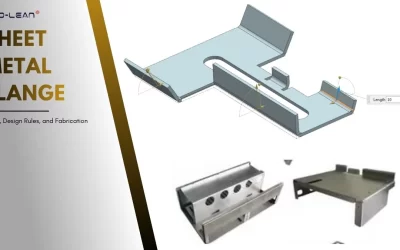
Great piece of content on chrome plating. I was looking for chrome layer thicknesses, and i get all information’s here. Thank you!
Thank you Felix, we are glad that you found this article informative.